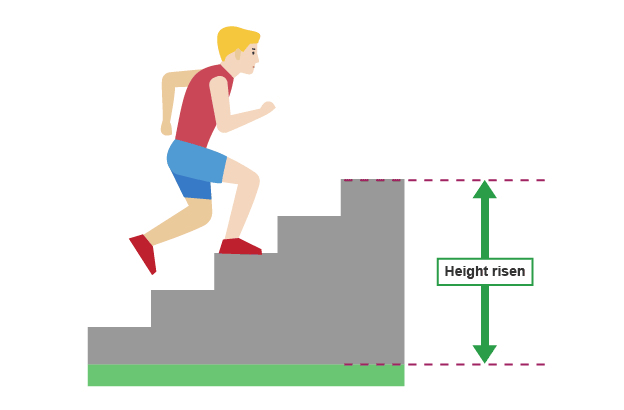P4: Investigating personal power
1/8
Earn XP
Description and Tags
Name | Mastery | Learn | Test | Matching | Spaced |
|---|
No study sessions yet.
9 Terms
Independent variable
vertical height of stairs
Dependent variable
time taken to run up stairs
Controlled variable
mass of the student
Apparatus
Flight of stairs (or stepping platform)
Bathroom/ newton scales to measure mass of a student
Metre stick or ruler
Stopwatch

Method
student uses bathroom scales to find mass in kilograms
mass is multiplied by 10 to find force in N
measure height of steps on staircase to determine average height
multiply number steps by average height to find vertical height h of the staircase
another student at the top uses a stopwatch to measure time taken to run up the stairs
experiment should be repeated to find an average
Results
divide work done (force x vertical height) by time taken

Justification
a heavier person requires more power to complete experiment in same time as a lighter person
Error
fewer stairs have shorter time and error in measured time increases to an unacceptable level
Safety
running up stairs quickly makes it easy to fall
only one person at a time to prevent collisions